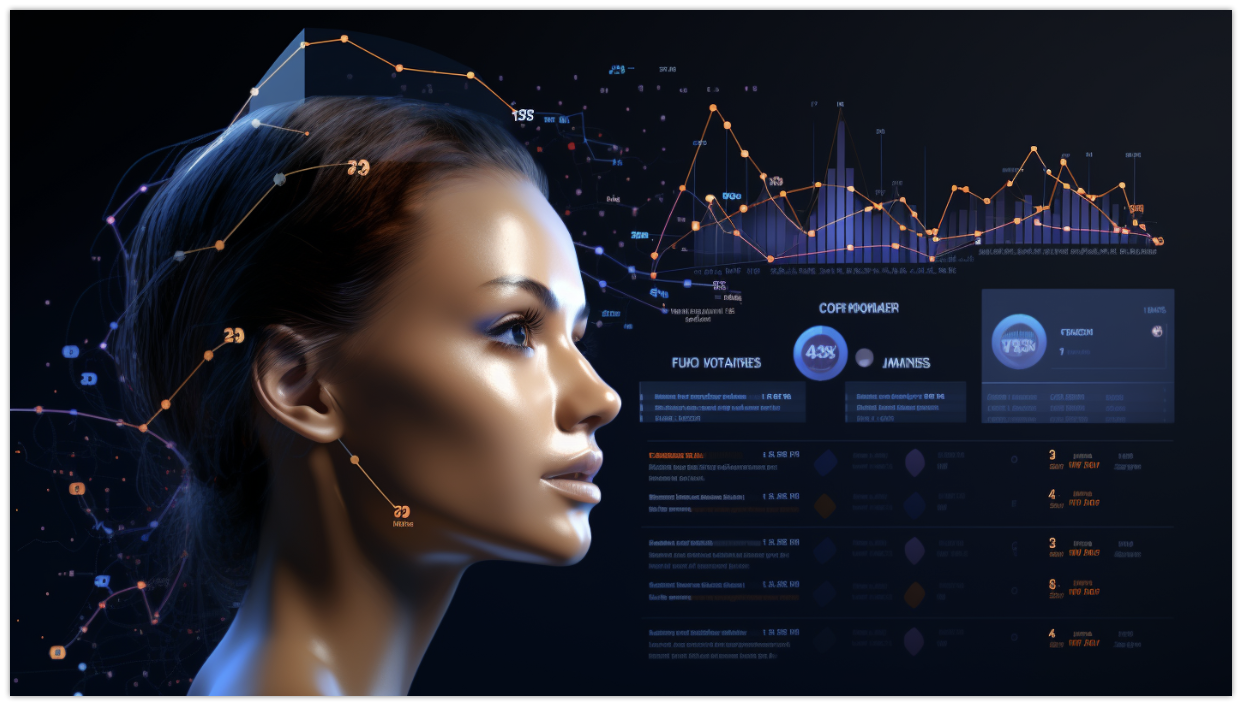In today's competitive business landscape, understanding your customers is paramount. Properly executed customer profiling is the cornerstone of practical customer analysis. By delving deep into the intricacies of your target audience, businesses can tailor their strategies to resonate more profoundly with potential clients. This not only boosts sales but also fosters loyalty and ensures that marketing efforts are not wasted. The benefits of customer profiling and persona marketing are manifold, from refining marketing campaigns to enhancing product development. Let's embark on a journey to uncover the essence of customer profiling and its significance in driving business success.
What is Customer Profiling?
Customer profiling is the process of creating a detailed portrait of your ideal customer. This involves understanding their demographics, preferences, behaviours, and more. It's a crucial component of customer analysis, allowing businesses to tailor their offerings and marketing strategies to resonate with specific customer segments.
By leveraging customer profiling, companies can ensure that their marketing efforts, especially persona marketing, are targeted and effective. This not only enhances the chances of attracting the right audience but also ensures that resources are utilized optimally.
What is Customer Analysis?
Customer analysis is a pivotal aspect of business strategy, as the bridge between a company and its clientele. It delves deep into understanding the intricate facets of your customers, from their overt wants to their latent needs. But it's more than just a superficial understanding; it's about getting to the heart of what makes your customers tick.
Understanding Core Desires: At the heart of customer analysis is the quest to understand the core desires and motivations of your customers. What are the emotional triggers that drive them to make a purchase? Is it a need for security, a desire for luxury, or the pursuit of convenience?
Identifying Pain Points: Customers have challenges or pain points they're trying to overcome. By identifying these challenges, businesses can tailor their products and services to provide solutions, making them indispensable to customers.
Gathering Data: Customer analysis isn't just about intuition; complex data backs it. This includes qualitative data, like customer interviews and feedback, and quantitative data, like purchase histories and website analytics. This data provides a holistic view of the customer, from their preferences to their behaviours.
Analyzing Buying Patterns: By studying the buying patterns of customers, businesses can predict future trends, stock up on popular items, and even tailor marketing campaigns to highlight products that are likely to resonate with their target audience.
Adapting to Customer Needs: The ultimate goal of customer analysis is adaptation. It's about taking the insights from the analysis and using them to refine business processes, product offerings, and service delivery. This ensures that businesses are always in tune with their customers, meeting their needs and exceeding their expectations.
Staying Ahead of the Curve: In today's fast-paced business world, staying static is akin to moving backwards. Customer analysis ensures that businesses are always ahead of the curve, anticipating customer needs and innovating to meet them. This proactive approach not only ensures relevance but also fosters loyalty, as customers appreciate businesses that understand and cater to their needs.
In essence, customer analysis is the compass that guides business decisions, ensuring that they're always aligned with customer needs and preferences. It's the foundation of a customer-centric approach, which is crucial in today's competitive market landscape.
Why is Customer Profiling & Customer Analysis Important?
The importance of customer profiling and analysis cannot be overstated. These processes enable businesses to shape their communications and marketing strategies to address customers' goals effectively. By understanding their audience, companies can target customers more precisely, optimizing their return on investment.
Furthermore, customer analysis provides insights into the best marketing channels, helping businesses decide where to allocate resources. This understanding also aids in product or service improvement, ensuring that offerings meet customer expectations. Moreover, by building on the principles of persona marketing, businesses can foster stronger relationships with their clients, enhancing customer loyalty and reducing churn. In essence, customer profiling and analysis are the bedrock of a customer-centric approach, driving business growth and sustainability.
3 Customer Profiling Strategies
Psychographic Strategy: This strategy dives deep into the psychological aspects of consumers. It's about understanding the intangible elements that drive consumer behavior. Key components include:
Values: What are the core beliefs that guide a consumer's decisions? This could be environmental consciousness, family orientation, or a desire for luxury.
Opinions: How does a consumer feel about certain topics, brands, or products? This can give insights into their preferences and aversions.
Interests: What hobbies or activities does the consumer engage in? This can guide businesses in aligning their products or services with these interests.
Lifestyles: How does the consumer live their life? Are they adventurous, sedentary, health-conscious, or tech-savvy?
By understanding these psychological factors, businesses can tailor their marketing messages to resonate on a deeper, more personal level. It allows for a more targeted and effective marketing strategy that speaks directly to the consumer's core beliefs and desires.
Consumer Characteristics Strategy: This strategy focuses on the tangible, measurable attributes of consumers. Key Components include:
Demographics: This includes age, gender, income level, education, and marital status. These are basic attributes that can provide a foundational understanding of the consumer.
Buying Habits: How often does the consumer make a purchase? What channels do they use (online, in-store, etc.)? What triggers their buying decision?
Geographic Location: Where does the consumer live? This can influence their preferences, especially when it comes to products or services that are location-specific.
This is a foundational strategy that provides a baseline for more in-depth profiling. By understanding these tangible attributes, businesses can create marketing strategies that cater to the specific needs and preferences of different consumer segments. It's a starting point that can be further refined with insights from other profiling strategies.
Consumer Typology Method: This strategy categorises consumers into specific types or classifications based on shared characteristics. Mind Reader AI uses this method to profile customers because it can leverage the power of AI to make accurate predictions about the customer’s behaviour based on Typology on very little available data.
Behavioural Patterns: How does the consumer typically behave in certain situations? For instance, are they impulse buyers, or do they research extensively before making a purchase?
Openness: How open is the customer to the idea of your product and service
Loyalty Status: Is the consumer brand loyal, or do they switch brands?
While this is a more generalized approach, it provides businesses with a broad overview of different consumer segments. Also, it can make amazingly accurate descriptions of clients based off very little information. Combined with other profiling strategies, it can truly help salespeople convert their clients effectively and quickly.
How To Create Customer Profiles?
Creating customer profiles is a meticulous process that requires a blend of research, analysis, and intuition. Start by segmenting your existing customers based on shared characteristics. Utilize both quantitative and qualitative research methods to gather data. This includes surveys, focus groups, and in-depth interviews. Analyze existing customer feedback, ensuring that you're tapping into the real voice of your customers.
Collaborate with different teams within your organization, from marketing to sales, to gather diverse insights. Leverage analytics tools to gain insights into customer behavior and preferences.
Once you've gathered sufficient data, create detailed buyer personas, encapsulating the essence of your target audience. Remember, these profiles should be dynamic, evolving with changing market conditions and customer preferences.
Leverage Analytics & AI
In the digital age, analytics tools like Google Analytics and Facebook Audience Insights have become indispensable. These platforms provide deep insights into how customers interact with your website and social media profiles.
From understanding the typical customer journey to analyzing page interactions, these tools offer a wealth of information. Moreover, advanced AI tools can further refine this data, predicting customer behaviours and preferences. By leveraging these tools, businesses can tailor their marketing strategies, ensuring they resonate with their target audience, and enhancing engagement and conversion rates.
Create Buyer Personas For Persona Marketing
Creating effective buyer personas is the cornerstone of successful persona marketing. These personas should encapsulate the essence of your target audience, from demographics to psychographics.
Furthermore, understand the factors influencing their buying decisions and preferred communication channels. Effective buyer persona marketing can significantly boost business outcomes, from increased engagement to higher conversion rates.
Use Customer Analysis Data & Personas Across the Entire Company
The insights from customer analysis and the created personas shouldn't be confined to the marketing department. These valuable resources should be leveraged across the entire organization.
Sales teams can use them to refine their pitches, product teams can utilize them to enhance product features, and design teams can leverage them to create resonating designs. By ensuring that the entire organization is aligned with customer insights, businesses can ensure a cohesive and customer-centric approach.
Decide Which Customer Segments & Personas To Focus On
With detailed customer personas, businesses face the crucial decision of determining which segments to focus on. Utilize customer journey maps to understand the buying process for each persona.
Analyze the potential return on investment for targeting each segment. By understanding the unique needs, preferences, and behaviours of each segment, businesses can tailor their strategies, ensuring optimal outcomes.
Use MindReader Personality AI For Customer Profiling & Analysis
MindReader AI is a cutting-edge tool designed to revolutionize customer profiling and analysis. By harnessing the power of AI, MindReader offers detailed insights into customer personalities, preferences, and behaviours. This tool is especially beneficial for persona marketing, allowing businesses to create highly targeted and personalized marketing campaigns.
While the conventional method involves segmenting your existing customers based on shared characteristics, utilizing both quantitative and qualitative research methods, and collaborating with different teams, Mind Reader is a more streamlined way to achieve this.
MindReader's Simplified Approach taps on the knowledge of proven Personality Science that categorizes individuals into four main categories:
Knights: These individuals are duty-fillers. They are loyal, dependable, and detail-oriented. They value security and traditions.
Explorers: Adventurous and spontaneous, explorers are always up for a challenge. They're hands-on learners who live in the present moment.
Healers: Idealistic and passionate, healers are driven by values and seek deeper meaning in everything they do. They are compassionate and often drawn to helping professions.
Wizards: Analytical and strategic, wizards are problem solvers. They are driven by logic and are always seeking knowledge.
The features of MindReader AI are vast, from predictive analytics to behavioural analysis. The benefits are manifold, from enhanced customer engagement to optimized marketing ROI.
Conclusion
In the ever-evolving business landscape, customer profiling, customer analysis, and persona marketing are vital tools for success. By understanding their audience, businesses can tailor their strategies, ensuring resonance and relevance. This not only boosts sales but also reduces customer churn, driving sustainable growth and success.




